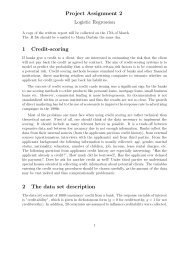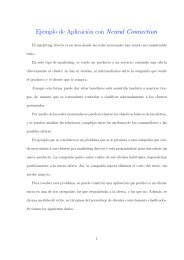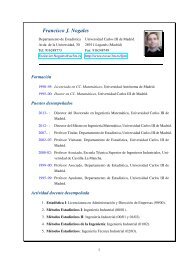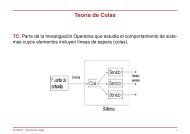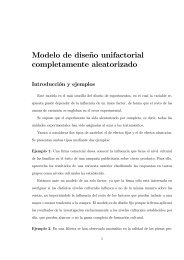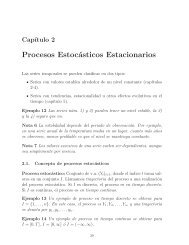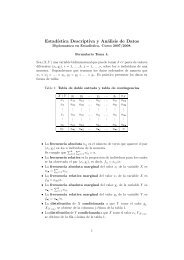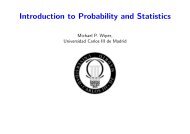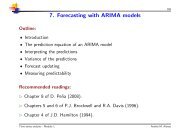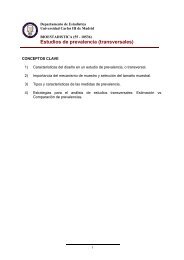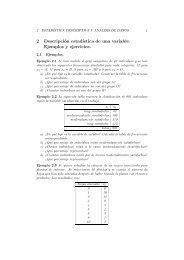Slides Chapter 1. Measure Theory and Probability
Slides Chapter 1. Measure Theory and Probability
Slides Chapter 1. Measure Theory and Probability
Create successful ePaper yourself
Turn your PDF publications into a flip-book with our unique Google optimized e-Paper software.
<strong>1.</strong>6. MEASURABILITY AND LEBESGUE INTEGRAL<br />
functions defined from a measurable space (Ω,A) on the measurable<br />
space (IR,B), where B is the Borel σ-algebra. We consider<br />
also a σ-finite measure µ.<br />
Definition <strong>1.</strong>25 (Indicator function)<br />
Given S ∈ A, an indicator function, 1 S : Ω → IR, gives value 1 to<br />
elements of S <strong>and</strong> 0 to the rest of elements:<br />
{ 1, ω ∈ S;<br />
1 S (ω) =<br />
0, ω /∈ S.<br />
Next we define simple functions, which are linear combinations<br />
of indicator functions.<br />
Definition <strong>1.</strong>26 (Simple function)<br />
Let (Ω,A,µ) be a measure space. Let a i be real numbers <strong>and</strong><br />
{S i } n i=1 disjoint elements of A. A simple function has the form<br />
n∑<br />
φ = a i 1 Si .<br />
i=1<br />
Proposition <strong>1.</strong>9 Indicators <strong>and</strong> simple functions are measurable.<br />
Definition <strong>1.</strong>27 (Lebesgueintegralfor simplefunctions)<br />
(i) The Lebesgue integral of a simple function φ with respect to<br />
a σ-finite measure µ is defined as<br />
∫ n∑<br />
φdµ = a i µ(S i ).<br />
Ω<br />
(ii) The Lebesgue integral of φ with respect to µ over a subset<br />
i=1<br />
A ∈ A is ∫<br />
A<br />
φdµ =<br />
∫<br />
A<br />
φ·1 A dµ =<br />
n∑<br />
a i µ(A∩S i ).<br />
i=1<br />
ISABEL MOLINA 25



